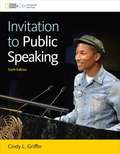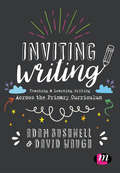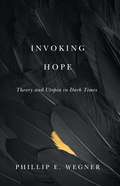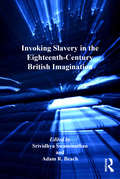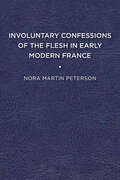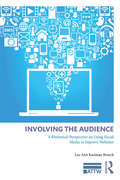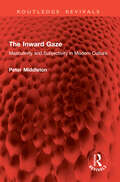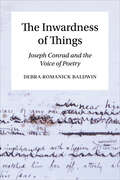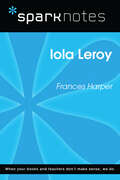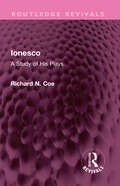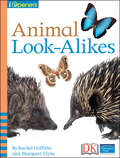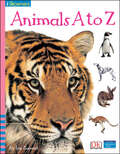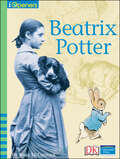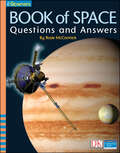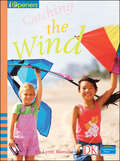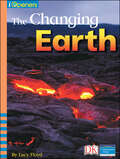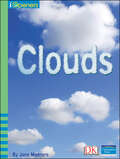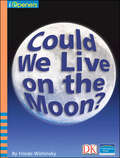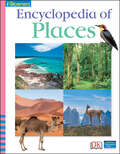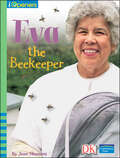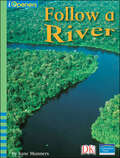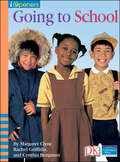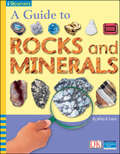- Table View
- List View
Invitation To Public Speaking - National Geographic Edition
by Cindy GriffinGrounded in rhetorical tradition while offering a fresh perspective, INVITATION TO PUBLIC SPEAKING helps students understand the power and importance of public speaking--in their lives and in greater society. Intended for the introductory public speaking course, INVITATION TO PUBLIC SPEAKING engages students in the public dialogue, encourages civic engagement, and illustrates how they will apply speaking skills in their course work and throughout their careers. Speech-building exercises, thoughtful real-life examples, an invigorating art program, and an engaging voice help students comprehend public speaking as an activity to be engaged in with others, and prepares them to enter the public dialogue. INVITATION TO PUBLIC SPEAKING also features the most comprehensive integrated technology program available, giving students more interactive skill-building practice for public speaking.
Inviting Interruptions: Wonder Tales in the Twenty-First Century (Series in Fairy-Tale Studies)
by Su Blackwell Shary Boyle Susanna Clarke Emma Donoghue Rosario Ferré Associate Professor Nalo Hopkinson Anne Kamiya David Kaplan Maya Kern Bryan Kamaoli Kuwada Kelly Link Dan Taulapapa McMullin Rosalind Hyatt Orme Diriye Osman Joellyn Rock Sofia Samatar Veronica Schanoes Nisi Shawl Shaun Tan Danielle Wood Miwa YanagiInviting Interruptions: Wonder Tales in the Twenty-First Century anthologizes contemporary stories, comics, and visual texts that intervene in a range of ways to challenge the popular perception of fairy tales as narratives offering heteronormative happy endings that support status-quo values. The materials collected in Inviting Interruptions address the many ways intersectional issues play out in terms of identity markers, such as race, ethnicity, class, and disability, and the forces that affect identity, such as non-normative sexualities, addiction, abuses of power, and forms of internalized self-hatred caused by any number of external pressures. But we also find celebration, whimsy, and beauty in these same texts—qualities intended to extend readers’ enjoyment of and pleasure in the genre. Edited by Cristina Bacchilega and Jennifer Orme, the book is organized in two sections. "Inviting Interruptions" considers the invitation as an offer that must be accepted in order to participate, whether for good or ill. This section includes Emma Donoghue’s literary retelling of "Hansel and Gretel," stills from David Kaplan’s short Little Red Riding Hood film, Bryan Kamaoli Kuwada’s story about stories rooted in Hawaiian tradition and land, and Shary Boyle, Shaun Tan, and Dan Taulapapa McMullin’s interruptions of mainstream images of beauty-webs, commerce, and Natives. "Interrupting Invitations" contemplates the interruption as a survival mechanism to end a problem that has already been going on too long. This section includes reflections on migration and sexuality by Diriye Osman, Sofia Samatar, and Nalo Hopkinson; and invitations to rethink human and non-human relations in works by Anne Kamiya, Rosario Ferré, Veronica Schanoes, and Susanna Clark. Each text in the book is accompanied by an editors’ note, which offers questions, critical resources, and other links for expanding the appreciation and resonance of the text. As we make our way deeper into the twenty-first century, wonder tales—and their critical analyses—will continue to interest and enchant general audiences, students, and scholars.
Inviting Writing: Teaching and Learning Writing Across the Primary Curriculum
by David Waugh Adam BushnellWith recent research findings by The National Literacy Trust indicating that 1 in 2 children enjoy writing, should primary school teachers be using it more? There are opportunities for teaching and learning writing in all subjects and all lessons. Inviting Writing supports you to find these opportunities and to plan, assess and develop children’s writing for a range of purposes in a range of styles. Chapters cover every curriculum subject and explore the unique writing opportunities for each one. It helps you to focus on teaching the skills of composition and on taking writing forward. Examples of good practice are included throughout, alongside suggestions for teaching activities. This book also outlines the many ways in which children's writing can be evidenced and encourages you to reconsider the ways in which children's progress in writing can be tracked and captured. This is a practical guide to teaching writing across the curriculum.
Invoking Hope: Theory and Utopia in Dark Times
by Phillip E. WegnerAn appeal for the importance of theory, utopia, and close consideration of our contemporary dark times What does any particular theory allow us to do? What is the value of doing so? And who benefits? In Invoking Hope, Phillip E. Wegner argues for the undiminished importance of the practices of theory, utopia, and a deep and critical reading of our current situation of what Bertolt Brecht refers to as finsteren Zeiten, or dark times.Invoking Hope was written in response to three events that occurred in 2016: the five hundredth anniversary of the publication of Thomas More&’s Utopia; the one hundredth anniversary of the founding text in theory, Ferdinand de Saussure&’s Course in General Linguistics; and the rise of the right-wing populism that culminated in the election of Donald Trump. Wegner offers original readings of major interventions in theory alongside dazzling utopian imaginaries developed from classical Greece to our global present—from Theodor Adorno, Ernst Bloch, Alain Badiou, Jacques Derrida, Fredric Jameson, Sarah Ahmed, Susan Buck-Morss, and Jacques Lacan to such works as Plato&’s Republic, W. E. B. Du Bois&’s John Brown, Isak Dinesen&’s &“Babette&’s Feast,&” Kim Stanley Robinson&’s 2312, and more. Wegner comments on an expansive array of modernist and contemporary literature, film, theory, and popular culture.With Invoking Hope, Wegner provides an innovative lens for considering the rise of right-wing populism and the current crisis in democracy. He discusses challenges in the humanities and higher education and develops strategies of creative critical reading and hope against the grain of current trends in scholarship.
Invoking Slavery in the Eighteenth-Century British Imagination (British Literature in Context in the Long Eighteenth Century)
by Srividhya Swaminathan Adam R. BeachIn the eighteenth century, audiences in Great Britain understood the term ’slavery’ to refer to a range of physical and metaphysical conditions beyond the transatlantic slave trade. Literary representations of slavery encompassed tales of Barbary captivity, the ’exotic’ slaving practices of the Ottoman Empire, the political enslavement practiced by government or church, and even the harsh life of servants under a cruel master. Arguing that literary and cultural studies have focused too narrowly on slavery as a term that refers almost exclusively to the race-based chattel enslavement of sub-Saharan Africans transported to the New World, the contributors suggest that these analyses foreclose deeper discussion of other associations of the term. They suggest that the term slavery became a powerful rhetorical device for helping British audiences gain a new perspective on their own position with respect to their government and the global sphere. Far from eliding the real and important differences between slave systems operating in the Atlantic world, this collection is a starting point for understanding how slavery as a concept came to encompass many forms of unfree labor and metaphorical bondage precisely because of the power of association.
Involuntary Confessions of the Flesh in Early Modern France (The Early Modern Exchange)
by Nora Martin PetersonInvoluntary Confessions of the Flesh in Early Modern France was inspired by the observation that small slips of the flesh (involuntary confessions of the flesh) are omnipresent in early modern texts of many kinds. These slips (which bear similarities to what we would today call the Freudian slip) disrupt and destabilize readings of body, self, and text—three categories whose mutual boundaries this book seeks to soften—but also, in their very messiness, participate in defining them. Involuntary Confessions capitalizes on the uncertainty of such volatile moments, arguing that it is instability itself that provides the tools to navigate and understand the complexity of the early modern world. Rather than locate the body within any one discourse (Foucauldian, psychoanalytic), this book argues that slips of the flesh create a liminal space not exactly outside of discourse, but not necessarily subject to it, either. Involuntary confessions of the flesh reveal the perpetual and urgent challenge of early modern thinkers to textually confront and define the often tenuous relationship between the body and the self. By eluding and frustrating attempts to contain it, the early modern body reveals that truth is as much about surfaces as it is about interior depth, and that the self is fruitfully perpetuated by the conflict that proceeds from seemingly irreconcilable narratives. Interdisciplinary in its scope, Involuntary Confessions of the Flesh in Early Modern France pairs major French literary works of the sixteenth and seventeenth centuries (by Marguerite de Navarre, Montaigne, Madame de Lafayette) with cultural documents (confession manuals, legal documents about the application of torture, and courtly handbooks). It is the first study of its kind to bring these discourses into thematic (rather than linear or chronological) dialog. In so doing, it emphasizes the shared struggle of many different early modern conversations to come to terms with the body’s volatility. Published by University of Delaware Press. Distributed worldwide by Rutgers University Press.
Involving the Audience: A Rhetoric Perspective on Using Social Media to Improve Websites (ATTW Series in Technical and Professional Communication)
by Lee Ann Kastman BreuchInvolving the Audience: A Rhetorical Perspective on Using Social Media to Improve Websites examines the usability challenges raised by large complex websites and proposes ways the social web can expand usability research to address these new challenges. Using the website healthcare.gov as an initial illustration, Breuch explains how large complex websites are inherently challenged by open-ended, interactive tasks that often have multiple pathways to completion. These challenges are illustrated through two in-depth case studies, each addressing the launch of an interactive, complex website designed for a large public audience.
The Inward Gaze: Masculinity and Subjectivity in Modern Culture (Routledge Revivals)
by Peter MiddletonFirst published in 1992, The Inward Gaze looks at men’s fantasies and self-images from a wide range of texts (notably boy’s superhero comics, modernist literary classics, and a Freudian case-study) to discuss the theories of subjectivity, masculinity, and emotion.The author explores the split between the experience-based claims of the men’s movement and the discourse theories of postmodernism. Does this division reveal a continuing refusal of masculine self-awareness? Why does postmodernist theory investigate desire and ignore emotion?This is a ground-breaking and controversial book which seeks to reformulate the way we think about men’s subjectivity. Its interdisciplinary approach weaves together material from many different sources and will be of vital interest to students of literature, cultural studies, gender studies, and psychoanalysis.
The Inwardness of Things: Joseph Conrad and the Voice of Poetry
by Debra Romanick BaldwinThe Inwardness of Things considers Joseph Conrad as a modern voice in an ancient and enduring quarrel between the poets and the philosophers. Beginning from the polemical poetics of his 1897 preface, Debra Romanick Baldwin focuses on Conrad’s distinctively poetic “inward” approach to truth – an inwardness that is found in lived experience, in language, and in the world beyond the individual. The book traces Conrad’s poetic voice from the rhetoric of his private letters to the narrative techniques of his fiction and finally to his explicit engagement with abstract approaches to truth. Baldwin applies narrative and rhetorical analysis to Conrad’s private correspondence, showing how he encouraged fellow writers – John Galsworthy, F. Warrington Dawson, R.B. Cunninghame Graham, Ted Sanderson, and Edward Noble – to engage with the inwardness of their own experience. The book explores how Conrad crafted moments of narrative solidarity in his fictional narratives to evoke the experience of the inwardness of another, while also considering his explicit polemics against abstract approaches to truth-seeking. Mindful of the colonial, late Victorian, Polish Romantic, and cosmopolitan contexts in which Conrad wrote, The Inwardness of Things nevertheless situates him in a broader human conversation that he himself invited and argues for the enduring value of his art.
Iola Leroy (SparkNotes Literature Guide Series)
by SparkNotesIola Leroy (SparkNotes Literature Guide) by Frances Harper Making the reading experience fun! Created by Harvard students for students everywhere, SparkNotes is a new breed of study guide: smarter, better, faster. Geared to what today's students need to know, SparkNotes provides: *Chapter-by-chapter analysis *Explanations of key themes, motifs, and symbols *A review quiz and essay topicsLively and accessible, these guides are perfect for late-night studying and writing papers
Ionesco: A Study of His Plays (Routledge Revivals)
by Richard CoeFirst published in 1971, Ionesco is a study of the plays written by the absurdist playwright Eugene Ionesco. Eugene Ionesco’s play La Cantatrice Chauve, first presented in 1950, established him as one of the most provocative leaders of post-war ‘Theatre of the Absurd’. By 1970, his work had been performed by leading actors and companies all over the world. The author attempts to understand this enigmatic playwright and his plays, while trying to explore the reasons behind his quick popularity. This book will be of interest to students of literature, drama, philosophy, and history.
iOpener: Animal Look-Alikes (iOpeners)
by Rachel Griffiths Margaret ClyneThis 691-word book compares animals that may look similar at first but are actually quite different! Young readers will discover the differences between alligators and crocodiles, butterflies and moths, frogs and toads, and seals and sea lions. This title includes recommended reading to discover more about these animals, a glossary of terms, an index, and discussion questions to aid in reading comprehension.Grade: 2Subject: Life ScienceGenre: Informational TextComprehension Skill/Strategy: Understand Context CluesDiagnostic Reading Assessment (DRA/EDL): 20Guided Reading Level: KLexile Level: 19DK's iOpeners equip K-6 students with the skills and strategies they need to access and comprehend nonfiction so that they are not only learning to read but reading to learn. The combination of high-interest content and eye-popping photography of iOpeners brings science and social studies topics to life, raises student achievement in reading, and boosts standardized test scores.
iOpener: Animals A to Z (iOpeners)
by Iris ZammitIn Animals A to Z, beginning readers can explore the whole alphabet of animals from alligator to zebra. Each colorful photograph is accompanied by the name of the animal and the upper and lowercase letter that it starts with. This 29-word book includes interactive questions at the back to aid in reading comprehension.Grade: KindergartenSubject: Life ScienceGenre: ReferenceComprehension Skill/Strategy: Identify Text Organization and StructureDiagnostic Reading Assessment (DRA/EDL): AGuided Reading Level: ALexile Level: 1DK's iOpeners equip K-6 students with the skills and strategies they need to access and comprehend nonfiction so that they are not only learning to read but reading to learn. The combination of high-interest content and eye-popping photography of iOpeners brings science and social studies topics to life, raises student achievement in reading, and boosts standardized test scores.
iOpener: Beatrix Potter (iOpeners)
by Rosie McCormickThis book will give young readers a glimpse into the life and works of Beatrix Potter, the famous artist and writer. This title includes lots of photographs and a set of discussion questions to aid in reading comprehension.Grade: 1Subject: HistoryGenre: Biography/AutobiographyComprehension Skill/Strategy: Draw ConclusionsDiagnostic Reading Assessment (DRA/EDL): 16Guided Reading Level: ILexile Level: 16DK's iOpeners equip K-6 students with the skills and strategies they need to access and comprehend nonfiction so that they are not only learning to read but reading to learn. The combination of high-interest content and eye-popping photography of iOpeners brings science and social studies topics to life, raises student achievement in reading, and boosts standardized test scores.
iOpener: Book of Space (iOpeners)
by Rosie McCormickThis 1,065-word book uses a question and answer format to explain everything about space, from space exploration, to telescopes, to planets, to our solar system. Photography, diagrams, and timelines cover everything young readers will want to know about space, and discussion questions aid in reading comprehension. Grade: 2Subject: Earth ScienceGenre: ReferenceComprehension Skill/Strategy: Identify Text Organization and StructureDiagnostic Reading Assessment (DRA/EDL): 28Guided Reading Level: MLexile Level: N/ADK's iOpeners equip K-6 students with the skills and strategies they need to access and comprehend nonfiction so that they are not only learning to read but reading to learn. The combination of high-interest content and eye-popping photography of iOpeners brings science and social studies topics to life, raises student achievement in reading, and boosts standardized test scores.
iOpener: Catching the Wind (iOpeners)
by Lynn BlancheThis 470-word book covers what wind is, how it helps things move, and when wind is too much. This title includes a glossary of terms, helpful diagrams, and discussion questions to aid in reading comprehension. Grade: 2Subject: Physical ScienceGenre: Informational TextComprehension Skill/Strategy: Identify Cause and EffectDiagnostic Reading Assessment (DRA/EDL): 20Guided Reading Level: KLexile Level: 20DK's iOpeners equip K-6 students with the skills and strategies they need to access and comprehend nonfiction so that they are not only learning to read but reading to learn. The combination of high-interest content and eye-popping photography of iOpeners brings science and social studies topics to life, raises student achievement in reading, and boosts standardized test scores.
iOpener: The Changing Earth (iOpeners)
by Lucy FloydThis 550-word book covers all sorts of information about tectonic plates, volcanoes, and highlands. Beautiful photography is accompanied by key diagrams and a glossary that explain the topic in detail. Discussion questions aid in comprehension of the subject matter.Grade: 2Subject: Earth ScienceGenre: Informational TextComprehension Skill/Strategy: Identify Cause and EffectDiagnostic Reading Assessment (DRA/EDL): 30Guided Reading Level: NLexile Level: N/ADK's iOpeners equip K-6 students with the skills and strategies they need to access and comprehend nonfiction so that they are not only learning to read but reading to learn. The combination of high-interest content and eye-popping photography of iOpeners brings science and social studies topics to life, raises student achievement in reading, and boosts standardized test scores.
iOpener: Clouds (iOpeners)
by Jane MannersIn Clouds, confident young readers will learn all about the stages of the water cycle and all the kinds of clouds. Full-page photography showcases all the cloud types and their shapes, while discussion questions will aid in comprehension of this 206-word book.Grade: 1Subject: Earth ScienceGenre: Informational TextComprehension Skill/Strategy: VisualizeDiagnostic Reading Assessment (DRA/EDL): 16Guided Reading Level: ILexile Level: 16DK's iOpeners equip K-6 students with the skills and strategies they need to access and comprehend nonfiction so that they are not only learning to read but reading to learn. The combination of high-interest content and eye-popping photography of iOpeners brings science and social studies topics to life, raises student achievement in reading, and boosts standardized test scores.
iOpener: Could We Live on the Moon? (iOpeners)
by Frieda WishinskyThis 703-word book teaches everything about the Moon and explains why it would be so difficult to live there! It covers topics such as air, water, weather, and gravity. This title also includes a section of recommended reading for young space fanatics, an index, a glossary of terms, and discussion questions to aid in reading comprehension. Grade: 2Subject: Earth ScienceGenre: Informational TextComprehension Skill/Strategy: Classify/CategorizeDiagnostic Reading Assessment (DRA/EDL): 28Guided Reading Level: MLexile Level: N/ADK's iOpeners equip K-6 students with the skills and strategies they need to access and comprehend nonfiction so that they are not only learning to read but reading to learn. The combination of high-interest content and eye-popping photography of iOpeners brings science and social studies topics to life, raises student achievement in reading, and boosts standardized test scores.
iOpener: Encyclopedia of Places (iOpeners)
by DKIn Encyclopedia of Places, young readers will learn about the areas of the world, from the dry deserts to the cold tundra. This book includes beautiful photography of places and the common things those places contain. This 38-word book includes an index and discussion questions. It also introduces the concept of an encyclopedia to young learners.Grade: KindergartenSubject: GeographyGenre: ReferenceComprehension Skill/Strategy: Classify/CategorizeDiagnostic Reading Assessment (DRA/EDL): 4Guided Reading Level: CLexile Level: 4DK's iOpeners equip K-6 students with the skills and strategies they need to access and comprehend nonfiction so that they are not only learning to read but reading to learn. The combination of high-interest content and eye-popping photography of iOpeners brings science and social studies topics to life, raises student achievement in reading, and boosts standardized test scores.
iOpener: Eva the Beekeeper (iOpeners)
by Jane MannersThis 289-word book tells all about a beekeeper named Eva Prieto. It explains all her tools, her job, and her work with bees during all four seasons. This book contains a glossary of key bee-related terms and discussion questions to aid in reading comprehension. Grade: 1Subject: Life ScienceGenre: Biography/AutobiographyComprehension Skill/Strategy: Understand Author's PurposeDiagnostic Reading Assessment (DRA/EDL): 14Guided Reading Level: HLexile Level: 14DK's iOpeners equip K-6 students with the skills and strategies they need to access and comprehend nonfiction so that they are not only learning to read but reading to learn. The combination of high-interest content and eye-popping photography of iOpeners brings science and social studies topics to life, raises student achievement in reading, and boosts standardized test scores.
iOpener: Follow a River (iOpeners)
by Jane MannersFollow a River is a 198-word book for confident young readers who want to learn all about rivers. With beautiful photography of real rivers, descriptions of how they work, and amazing river facts, Follow a River is an excellent first guide to the subject. It also includes a glossary and discussion questions to aid in comprehension.Grade: 1Subject: GeographyGenre: Informational TextComprehension Skill/Strategy: Make InferencesDiagnostic Reading Assessment (DRA/EDL): 16Guided Reading Level: ILexile Level: 15DK's iOpeners equip K-6 students with the skills and strategies they need to access and comprehend nonfiction so that they are not only learning to read but reading to learn. The combination of high-interest content and eye-popping photography of iOpeners brings science and social studies topics to life, raises student achievement in reading, and boosts standardized test scores.
iOpener: Going to School (iOpeners)
by Margaret Clyne Rachel Griffiths Cynthia BenjaminThis 1,139-word book tells all about schools from around the world, from Ghana to Russia to Canada to Japan! This text uses examples of children who attend each school and details how long it takes them to get there, how the classroom is structured, and what their schoolwork looks like. This title includes a pronunciation guide and discussion questions to aid in reading comprehension.Grade: 2Subject: World CulturesGenre: Informational TextComprehension Skill/Strategy: Compare and ContrastDiagnostic Reading Assessment (DRA/EDL): 24Guided Reading Level: LLexile Level: N/ADK's iOpeners equip K-6 students with the skills and strategies they need to access and comprehend nonfiction so that they are not only learning to read but reading to learn. The combination of high-interest content and eye-popping photography of iOpeners brings science and social studies topics to life, raises student achievement in reading, and boosts standardized test scores.
iOpener: Guide to Growing (iOpeners)
by Sue GravesThis 106-word book tells all about the life cycles and growth of organisms, including frogs, butterflies, ostriches, and even sunflowers. This title includes an index and discussion questions to aid in reading comprehension.Grade: 1Subject: Life ScienceGenre: ReferenceComprehension Skill/Strategy: Sequence of EventsDiagnostic Reading Assessment (DRA/EDL): 10Guided Reading Level: FLexile Level: 9DK's iOpeners equip K-6 students with the skills and strategies they need to access and comprehend nonfiction so that they are not only learning to read but reading to learn. The combination of high-interest content and eye-popping photography of iOpeners brings science and social studies topics to life, raises student achievement in reading, and boosts standardized test scores.
iOpener: A Guide to Rocks and Minerals (iOpeners)
by Jeffrey B. FuerstThis book covers everything you need to know about rocks and minerals, including the different types of rocks, examples of key minerals, how to identify minerals, and what various rocks and minerals are used for today. A glossary and index highlight key terms and subject matter, while discussion questions aid in reading comprehension.Grade: 4Subject: Earth ScienceGenre: ReferenceComprehension Skill/Strategy: Classify/CategorizeDiagnostic Reading Assessment (DRA/EDL): 40Guided Reading Level: TLexile Level: 750LDK's iOpeners equip K-6 students with the skills and strategies they need to access and comprehend nonfiction so that they are not only learning to read but reading to learn. The combination of high-interest content and eye-popping photography of iOpeners brings science and social studies topics to life, raises student achievement in reading, and boosts standardized test scores.
